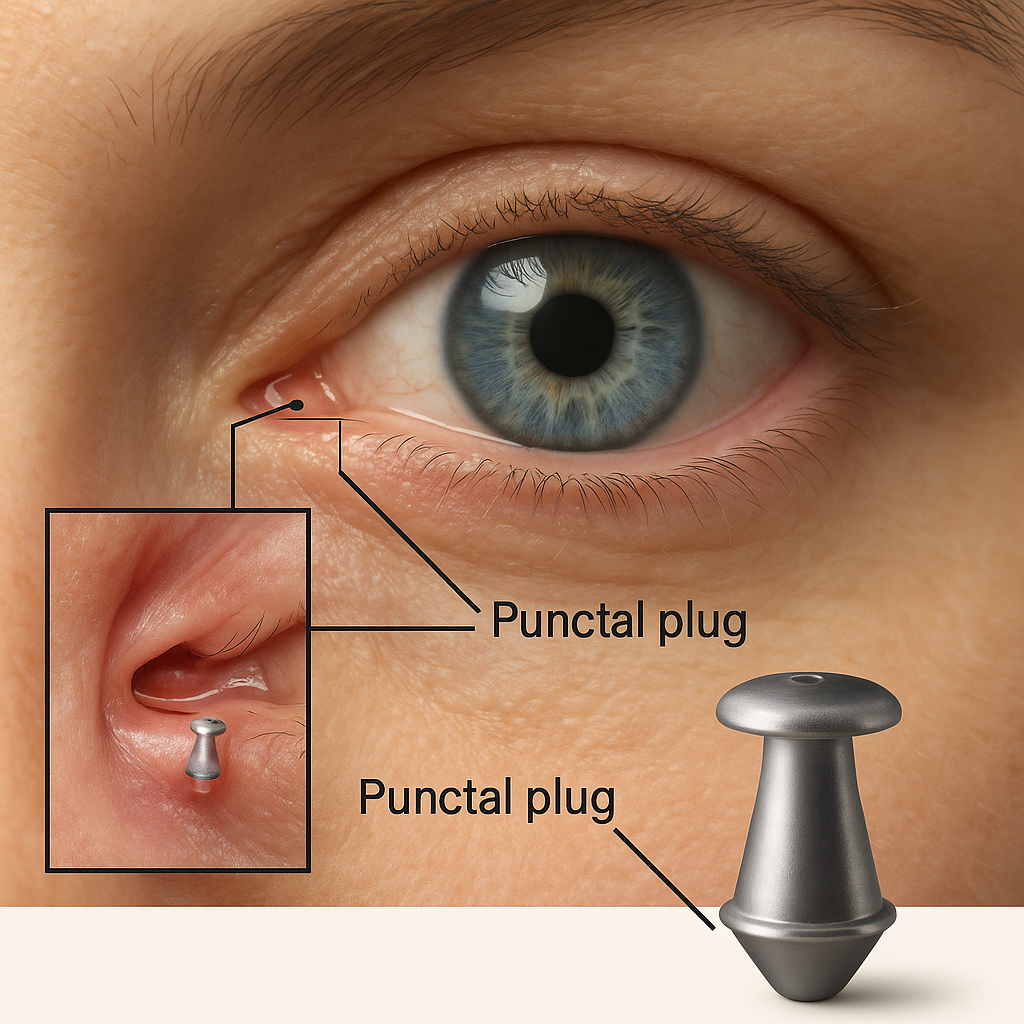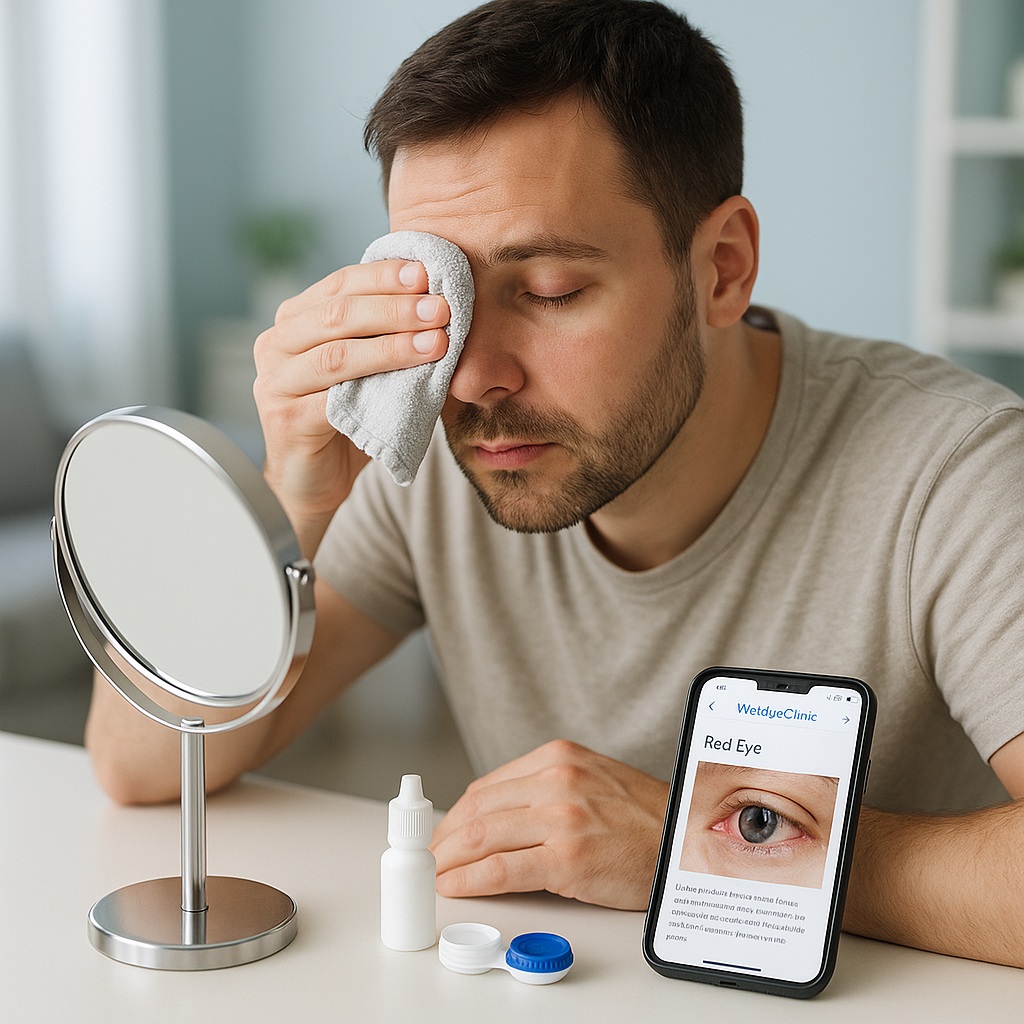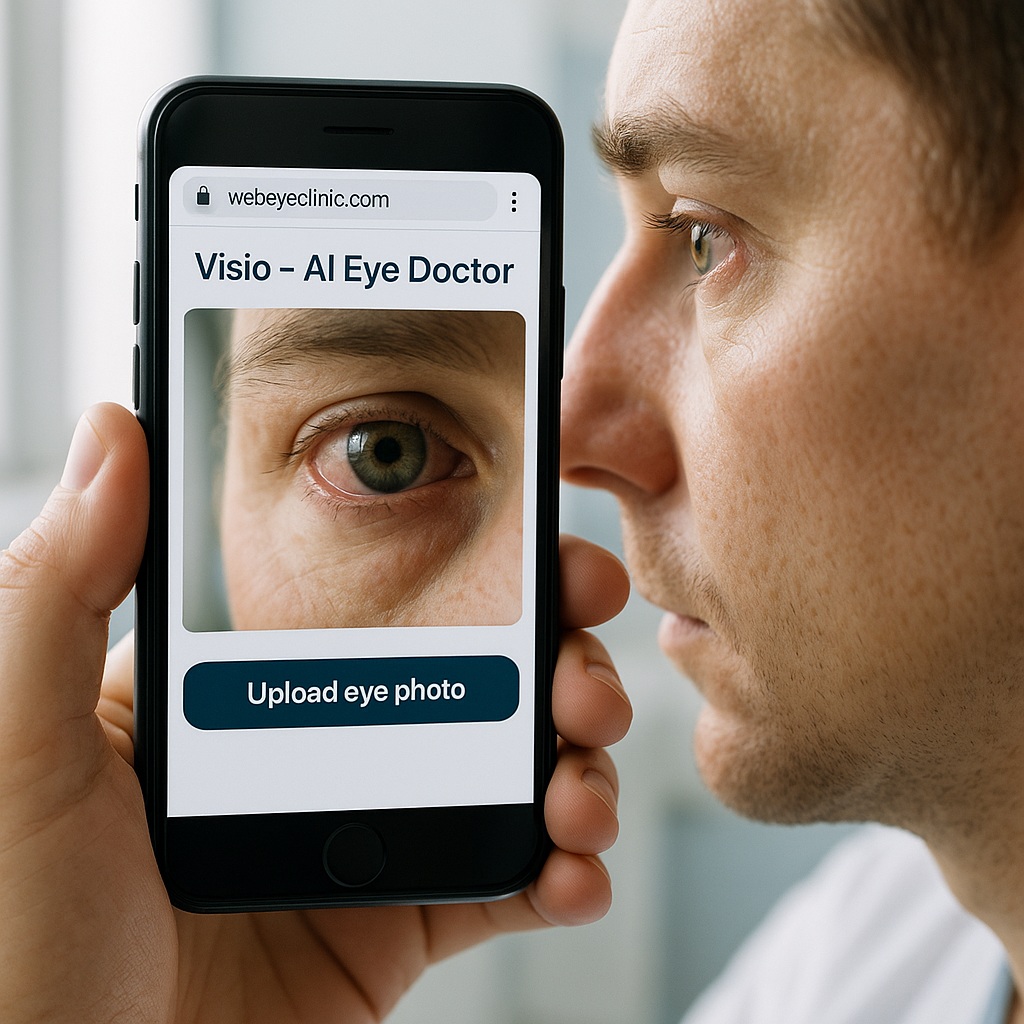Eye Plugs (Punctal Plugs) for Dry Eyes: Complete Guide
Published: August 16, 2025
1. What Are Eye (Punctal) Plugs for Dry Eyes?
Punctal plugs, also known as eye plugs for dry eyes, are small devices inserted into the tear ducts to reduce drainage. They are a proven option for patients with severe dry eye disease that is not adequately controlled with drops alone. Many people search for what are punctal plugs for dry eyes, and this guide answers that in detail.
2. How Do Punctal Plugs Work?
The procedure for punctal plugs is simple and effective. Tears normally drain through tiny puncta in the eyelids. Inserting a plug blocks this passage, helping tears stay on the surface longer. This is why many patients look up punctal plugs procedure step by step, which typically takes just a few minutes in the clinic.
3. Who Is a Good Candidate?
You may be a candidate if you experience:
- Moderate to severe dry eye not controlled with lubricants
- Post-surgical dryness such as punctal plugs after LASIK surgery
- Rapid tear drainage causing instability of the tear film
4. Types of Eye Plugs
4.1 Temporary / Dissolvable
- Material: Collagen or similar dissolvable polymers
- Duration: A few days to several months
- Use case: Trial therapy to see how long punctal plugs last and how effective they are
4.2 Longer-Lasting / Removable
- Material: Silicone or thermoplastic
- Designs: External punctal-cap plugs or intracanalicular plugs
- Use case: Long-term control of dry eye disease
5. Benefits and Risks
5.1 Benefits of Punctal Plugs for Dry Eyes
- Improved eye comfort and reduced dryness
- Decreased reliance on artificial tears
- Safe and reversible option
- Effective even in punctal plugs vs artificial tears comparisons for persistent cases
5.2 Risks of Eye Plugs for Dry Eyes
While generally safe, there are punctal plugs side effects and complications to be aware of:
- Foreign-body sensation
- Excessive tearing (epiphora)
- Plug displacement (many ask can punctal plugs fall out)
- Redness, inflammation, or rare infection
6. The Procedure: Step by Step
The punctal plugs procedure step by step includes:
- Examination and sizing of puncta
- Numbing with eye drops
- Insertion with specialized forceps or an inserter
- Verification of placement
7. Recovery & Aftercare
Most patients experience mild irritation initially. Punctal plugs recovery and aftercare tips include avoiding eye rubbing for 48 hours, using prescribed drops, and reporting persistent discomfort.
8. Cost & Insurance
The punctal plugs cost and insurance coverage depends on type and plan. Many insurers cover them when medically necessary. Always check with your provider before scheduling.
9. Alternatives & How Plugs Fit into Dry-Eye Care
Some patients ask, “What are the best treatment for dry eyes besides plugs?” Here are common options:
- Artificial tears: Effective for mild cases
- Lid hygiene & warm compresses: Improve meibomian gland oil quality
- Prescription anti-inflammatory drops: Such as cyclosporine or lifitegrast
- Omega-3 supplements: Reduce ocular inflammation
- Moisture-chamber glasses / scleral lenses: Ideal for punctal plugs for severe dry eye disease
- In-office treatments: LipiFlow®, IPL, or meibomian gland probing
Plugs work best when combined with treatments addressing the root cause of dryness.
10. FAQs
10.1 How long do punctal plugs last?
Collagen plugs dissolve in days to months, while silicone plugs last until removed.
10.2 Can punctal plugs fall out?
Yes, displacement can occur, especially with frequent eye rubbing. If symptoms return, visit your doctor.
10.3 Are punctal plugs safe long term?
Yes, most people tolerate them well with regular check-ups.
10.4 What are the alternatives to punctal plugs?
Alternatives include artificial tears, prescription drops, scleral lenses, and advanced lid treatments.
10.5 Are punctal plugs better than artificial tears?
For mild dryness, artificial tears may suffice. For persistent dryness, plugs can provide superior tear retention.
Conclusion
Eye plugs for dry eyes are a quick, safe, and reversible option. They work best as part of a comprehensive dry-eye care plan, improving comfort and reducing dependence on artificial lubricants. With the right evaluation, plugs can make a lasting difference in eye health and quality of life.


